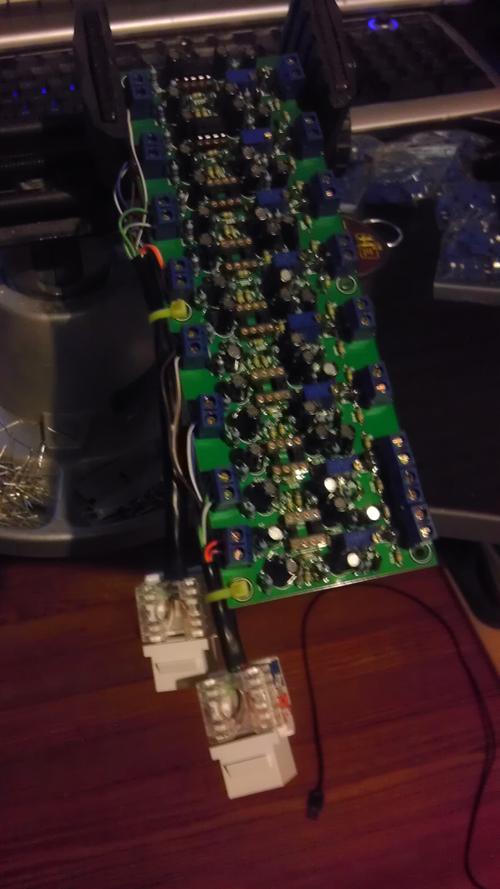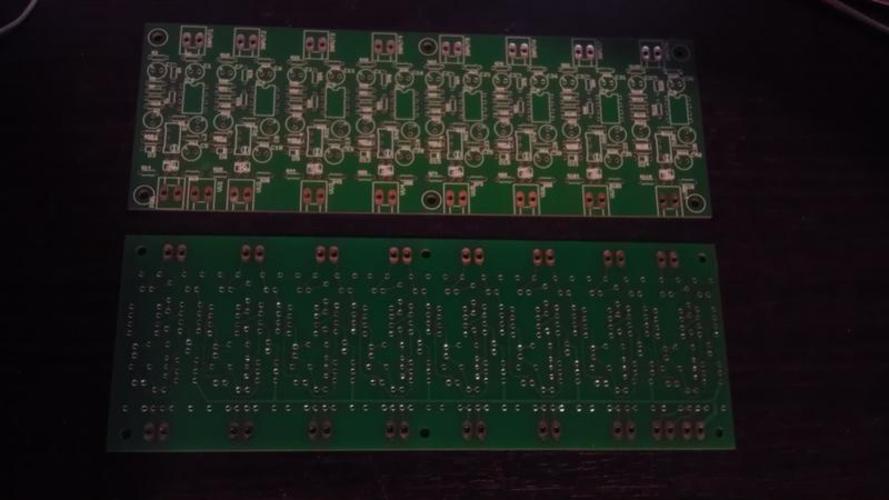boji
Well-known member
Hello again, a small update.
I made some 8 channel VU buffer boards for my console I'm slooooooly building. They are based off of the JLM circuit.
Sorry for the quick crappy photos, I was up all night stuffing one and just finished testing it on a sifam.
Yay, success. I have a few PCB's left if anyone is thinking of buffering 8/16/24 VU's.
They are fairly compact, ~6.5" x 4". Honestly the design is meh, the pads are too damn small, the silkscreen is nearly useless, and I did not leave enough spacing btw the pads and gp. But! They work.


I made some 8 channel VU buffer boards for my console I'm slooooooly building. They are based off of the JLM circuit.
Sorry for the quick crappy photos, I was up all night stuffing one and just finished testing it on a sifam.
Yay, success. I have a few PCB's left if anyone is thinking of buffering 8/16/24 VU's.
They are fairly compact, ~6.5" x 4". Honestly the design is meh, the pads are too damn small, the silkscreen is nearly useless, and I did not leave enough spacing btw the pads and gp. But! They work.








































